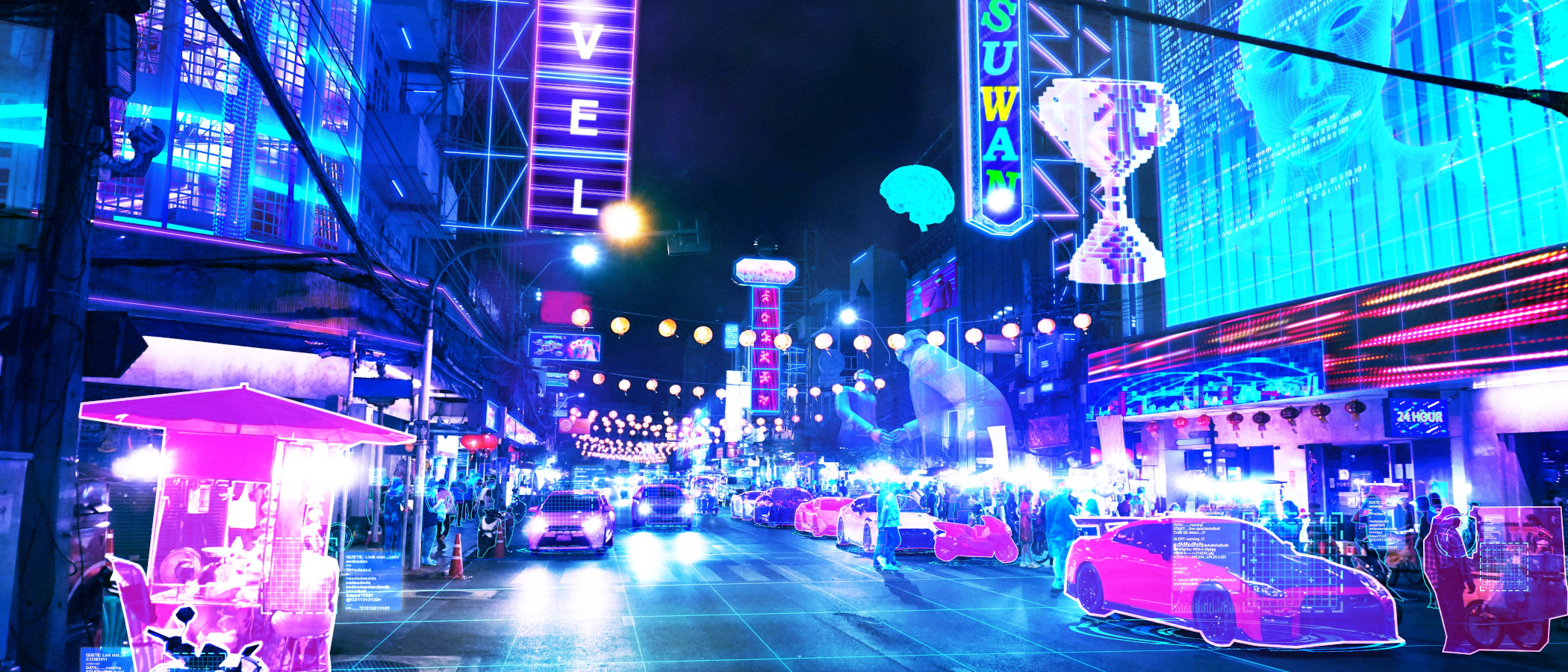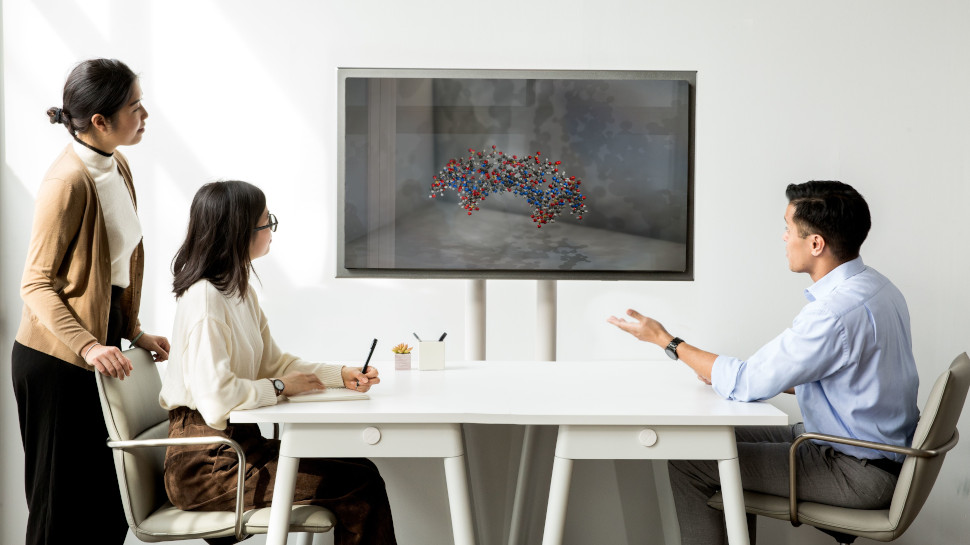Holograms are making the leap from science fiction to reality
New technology is bringing large-scale 3D holograms to the mainstream

On first inspection, the latest display from Looking Glass Factory appears much like any other. But once the device is powered on, viewers won’t cling to this misconception for long.
By shooting out angled beams of light from 100 million origin points at a rate of 60 times per second, the display creates large-scale three-dimensional holograms of the kind previously found only in science fiction.
The effect is a product of the way the human eye receives and computes information, explained Shawn Frayne, founder and CEO of Looking Glass Factory, in conversation with TechRadar Pro.
“Everything in the rooms we’re in right now feels more real than a photograph or video because light is shining with directionality. Our eyes and brains are awash in many different perspectives of 3D information,” he said.
“Rather than showing a single perspective like a regular 2D monitor, and rather than showing two different perspectives like a VR headset, our technology shines with a hundred different perspectives simultaneously, recreating the way that light rays bounce around the real world.”

Looking Glass Factory stands almost alone in the field of group-viewable holographic displays; its new 65-inch model is said to be 50x larger than any other on the market and 5x larger than any equivalent system tested in a lab setting.
But although it operates in a niche within a niche, by demonstrating the scalability of the technology, the company believes it can bring about a generational shift in the way media is consumed. “The idea is to show things in a new light,” said Frayne.
Are you a pro? Subscribe to our newsletter
Sign up to the TechRadar Pro newsletter to get all the top news, opinion, features and guidance your business needs to succeed!
The bigger, the better
The new 65-inch, 8K holographic display unveiled back in June 2022 is the fourth developed by Looking Glass Factory, which has also brought to market 16- and 32-inch models, as well as a picture frame-sized system for personal use.
The arrival at this latest milestone is the product of many years of development, extending as far back as Frayne’s childhood. He was “hooked on the dream of the hologram” at eight years old, he said, after watching the scene in Back to the Future II when Marty McFly is attacked by the hologram shark.
After spending a few years meddling with laser technology in high school, Frayne went on to study holography and physics at MIT and later founded Looking Glass Factory in 2014.
“Back in the early 2010s, there was a lot of energy going into the shift from 2D to 3D. People were talking about 3D printers in the home and Oculus had just launched its first developer kit on Kickstarter,” said Frayne.
“There was a lot of new energy going into the belief that 3D was the next step in how folks could connect, create and communicate with one another in more realistic ways. I got really excited about that.”

Although each display released by Looking Glass is powered by the same technology, the company is particularly excited about the opportunities made possible by its largest, which is the first that can generate life-sized human holograms.
The improvement in the quality of the spectacle made possible by the 65-inch model, Frayne told us, even came as something of a shock to the team itself.
“A quantitative size jump of 4x led to a 10-20x experience jump,” he said. “I think the big reason is that it begins to feel less like a device and more like a window into another world. That means you can begin to have full-scale characters and larger-than-life products.”
As for the upper limits of the technology, Looking Glass Factory believes there is plenty of room for further scaling. It’s already possible to tile multiple holographic displays together, but larger single units are well within the realms of possibility too.
Innovation, but at a price
Although the ambition is ultimately to change the way media is consumed in all settings, it will be some time yet before Looking Glass systems become a staple of every living room.
The full-sized displays are prohibitively expensive for the average consumer (the second largest costs north of $20,000, and Frayne declined to share pricing information for the latest), which means they are used almost exclusively in a commercial context.
One of the largest sections of the Looking Glass Factory customer base is made up of 3D design companies, many of whom were introduced to the product by their own employees and now use it as part of the creative process and to exhibit their work.
“The smaller devices are a great taste of the world of the hologram,” explained Frayne. “A lot of 3D creators that develop holograms for fun purchase our systems in the smallest size, but many happen to work in companies that use 3D at their core.”
Over the last year or two, hobbyists playing around with the 8-inch Looking Glass Portrait (which costs $400) have taken what they’ve created into their offices, he told us, leading to demand among companies for the larger-scale displays.

The other main way Looking Glass products are being deployed is in a marketing and events context. Large brands have been developing 3D content for years, even more so since the metaverse entered public consciousness, and are now looking for a better way of displaying it.
“Every building ever made, every shoe ever designed, every spaceship ever modeled is created in 3D. Now brands can visualize that for customers and team-members, without having to gear up for that three-dimensional experience.”
“Ours is the only commercial system on the market that lets more than one person see something in 3D without having to wear a headset, which is a crazy thing to say. One hundred years from now, we’ll look back at this moment as completely anomalous.”
Democratizing the hologram
Quite how quickly Looking Glass Factory will be able to bring holography into the mainstream, Frayne was unwilling to predict. “Exactly where it goes and when, history will tell the tale,” he said.
However, the company is adamant the technology, once sufficiently mature, will spread into all corners of personal, social and professional life.
“We believe holographic displays and holograms are the next form of media, after 2D videos, photos and apps,” Frayne said. “This will become a ubiquitous technology. That means they’ll be in the home and the office, and there will be ways to experience three-dimensional entertainment holographically in groups.”
Unlike with many new technologies or platforms, this is not a chicken and egg problem; there is plenty of 3D media already in existence, just waiting to be presented in hologram form.
The next few years for Looking Glass Factory, then, will be about investing further in R&D, but also getting holograms in front of as many new people as possible. A little like when someone puts on a VR headset for the first time, the hope is that experiencing holography first-hand and up close will be enough to get people hooked.
- Our list of the best business VR headsets on the market

Joel Khalili is the News and Features Editor at TechRadar Pro, covering cybersecurity, data privacy, cloud, AI, blockchain, internet infrastructure, 5G, data storage and computing. He's responsible for curating our news content, as well as commissioning and producing features on the technologies that are transforming the way the world does business.